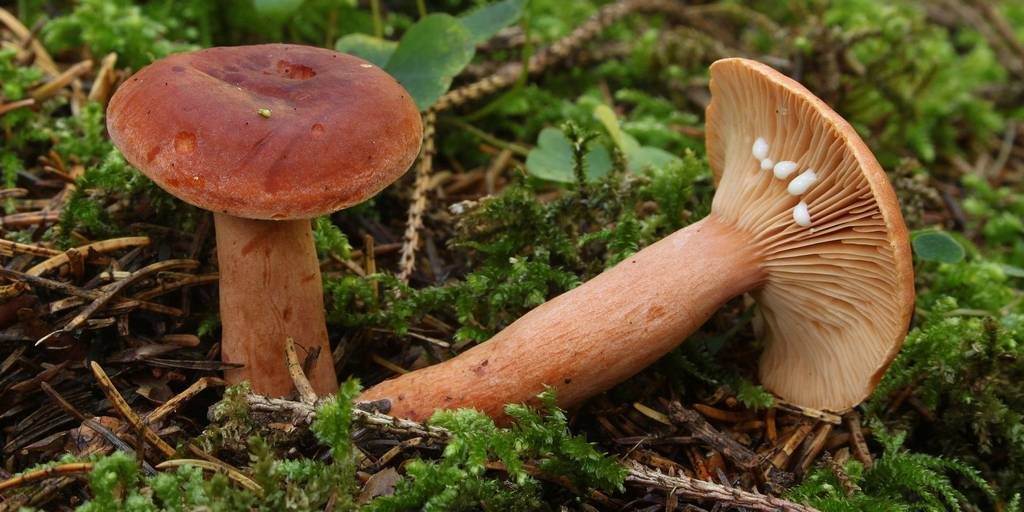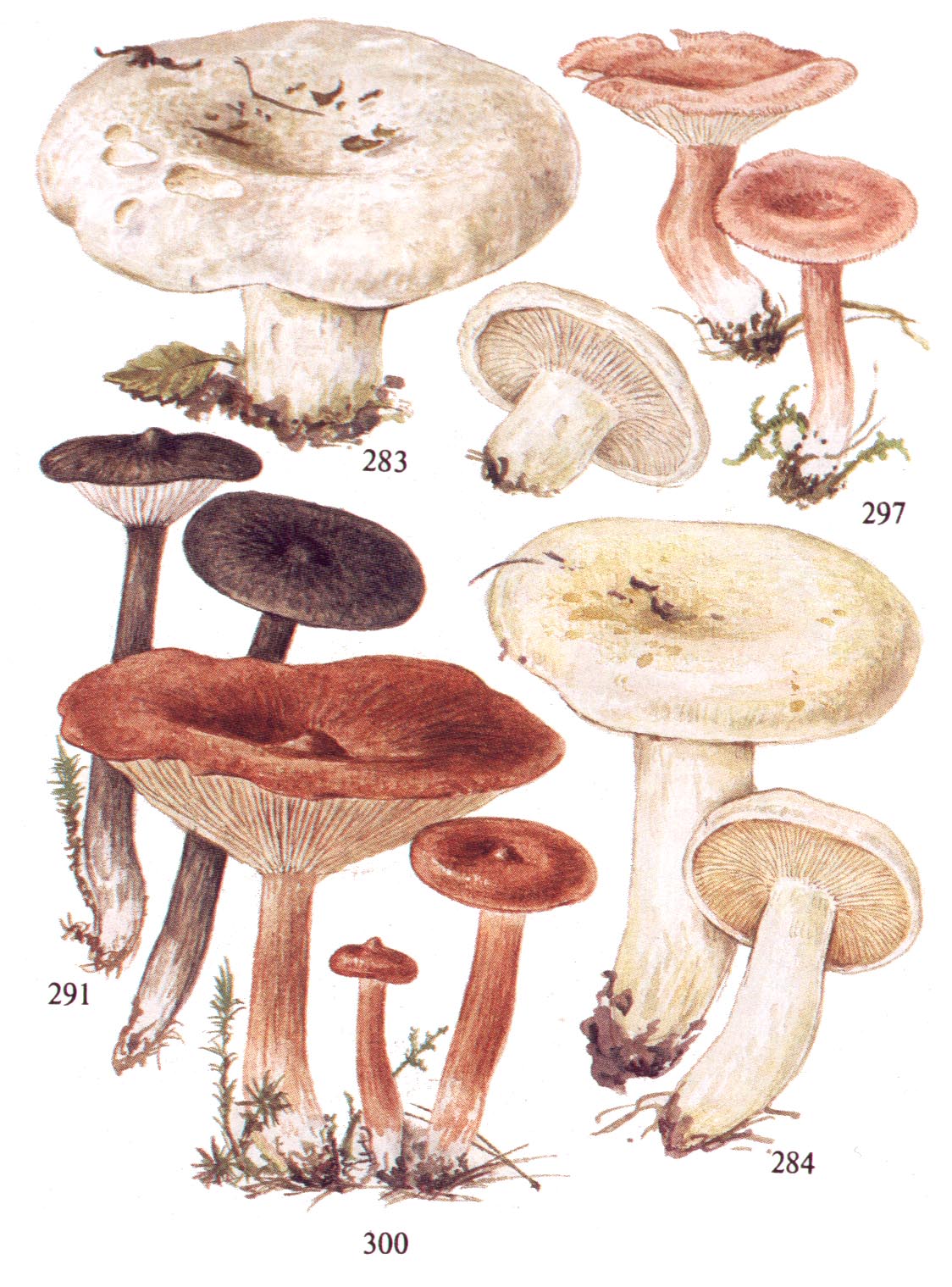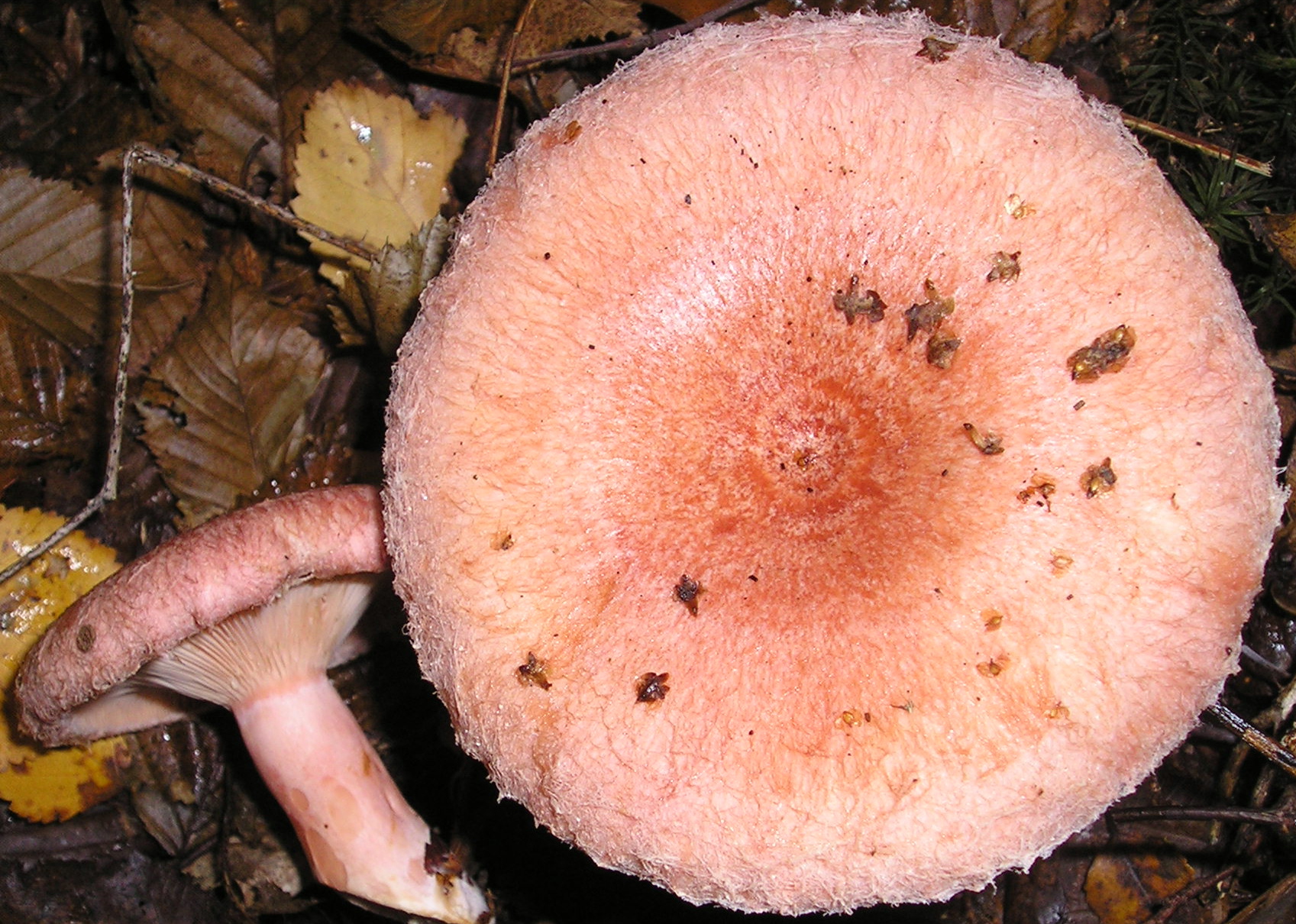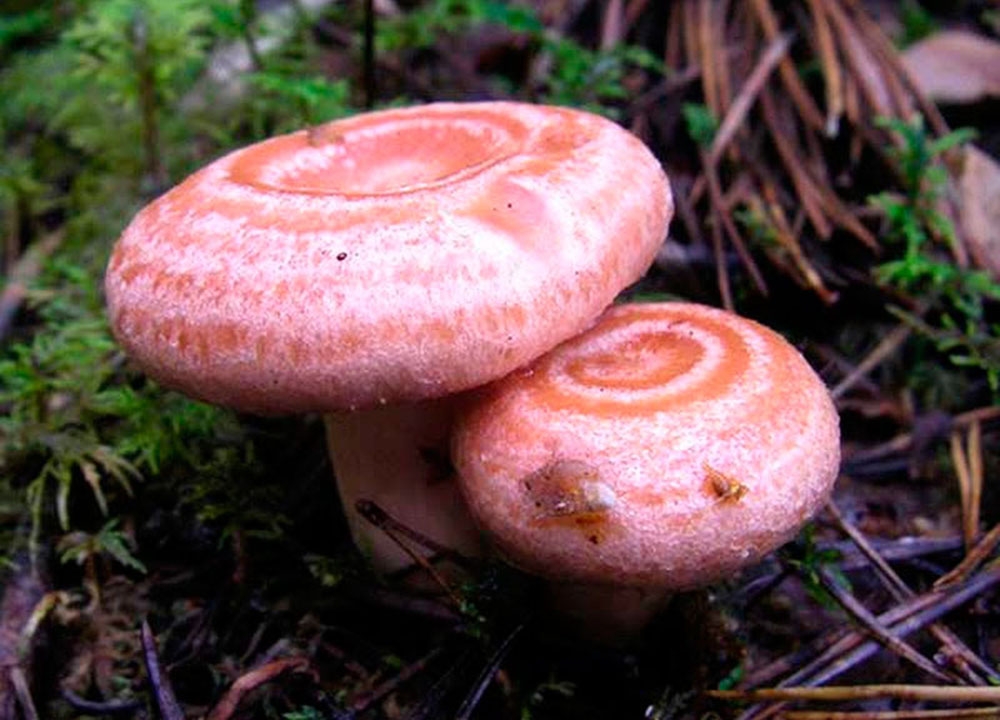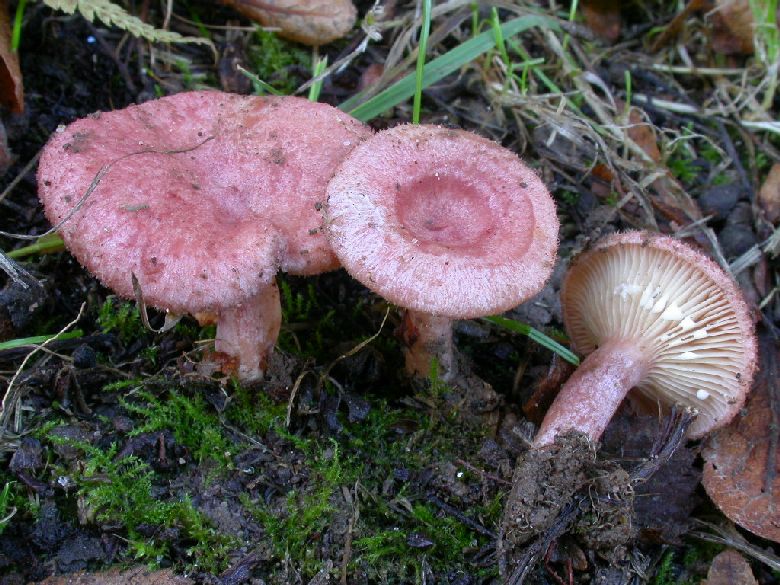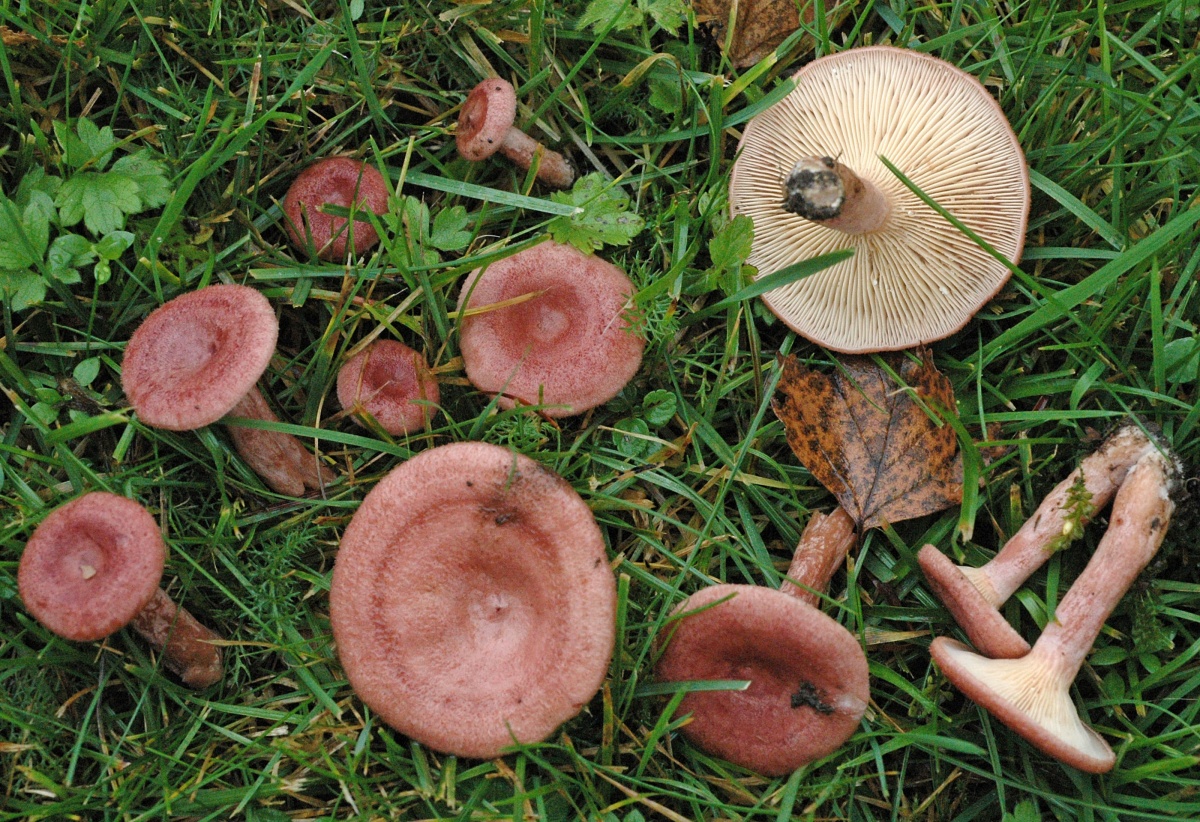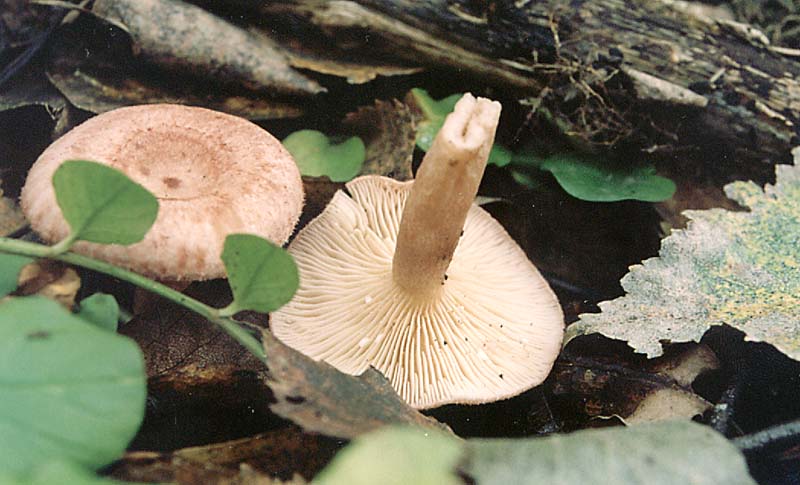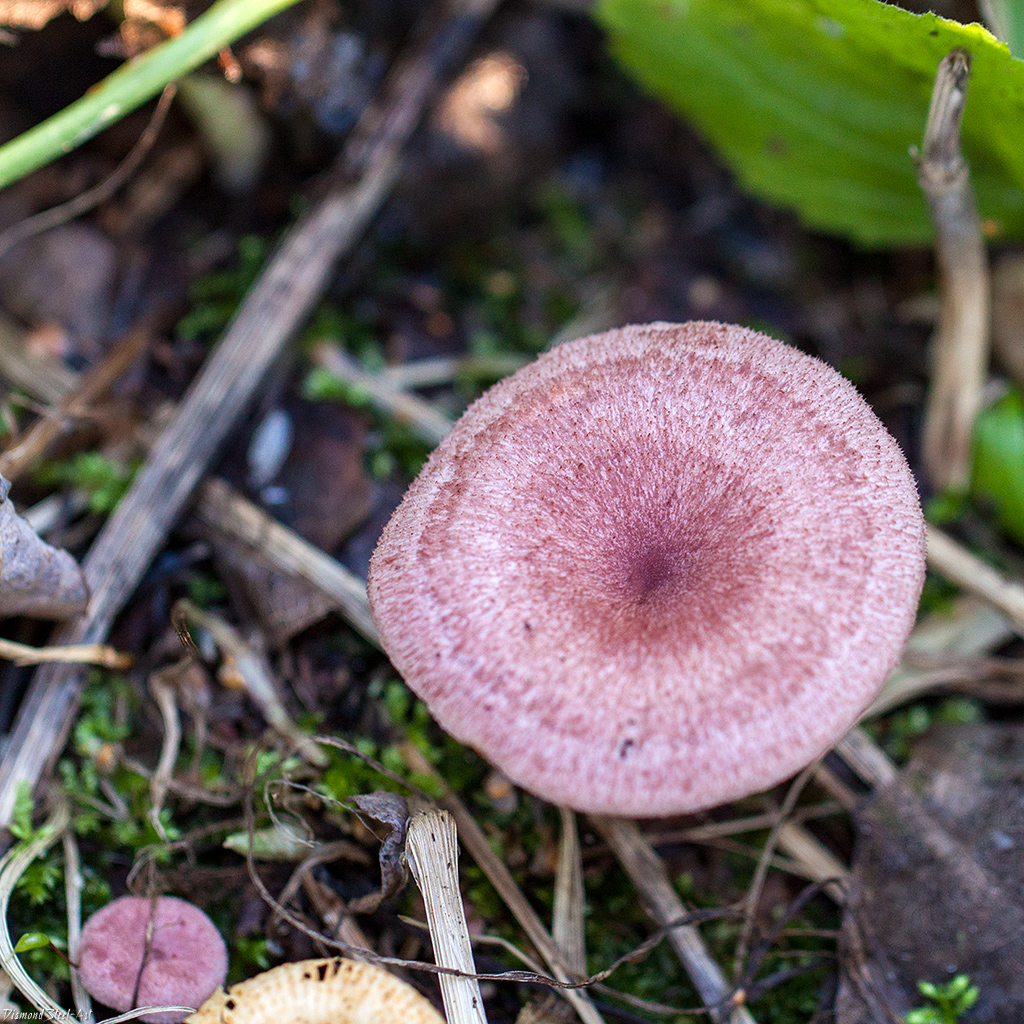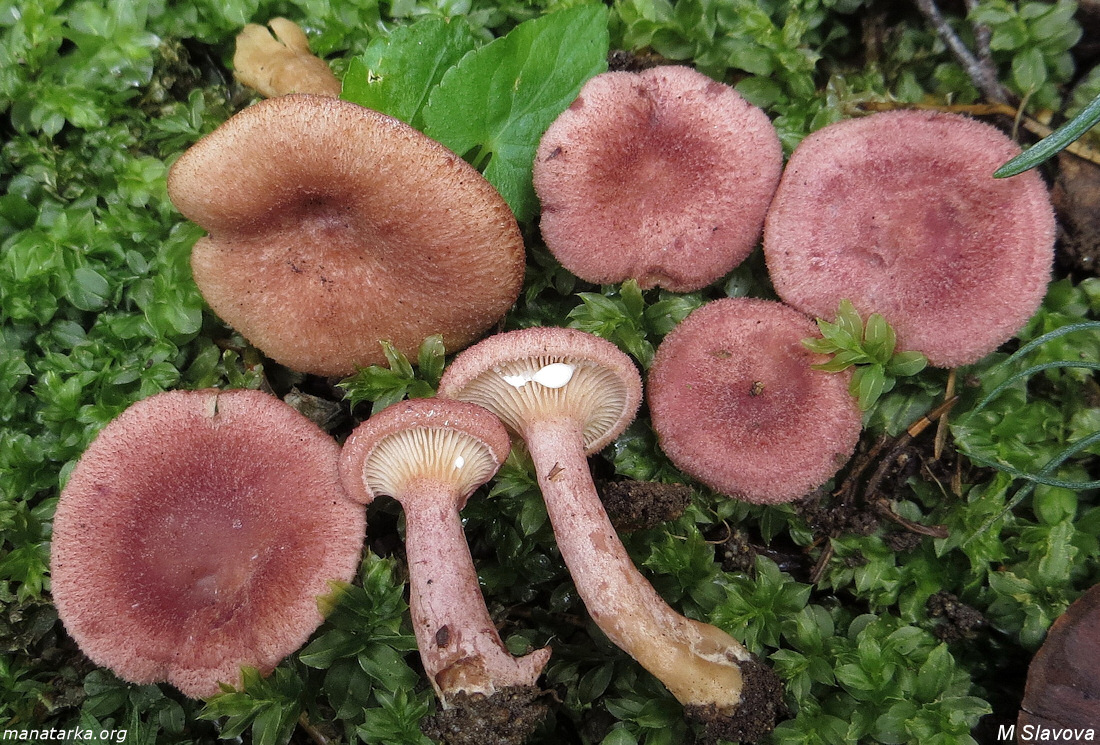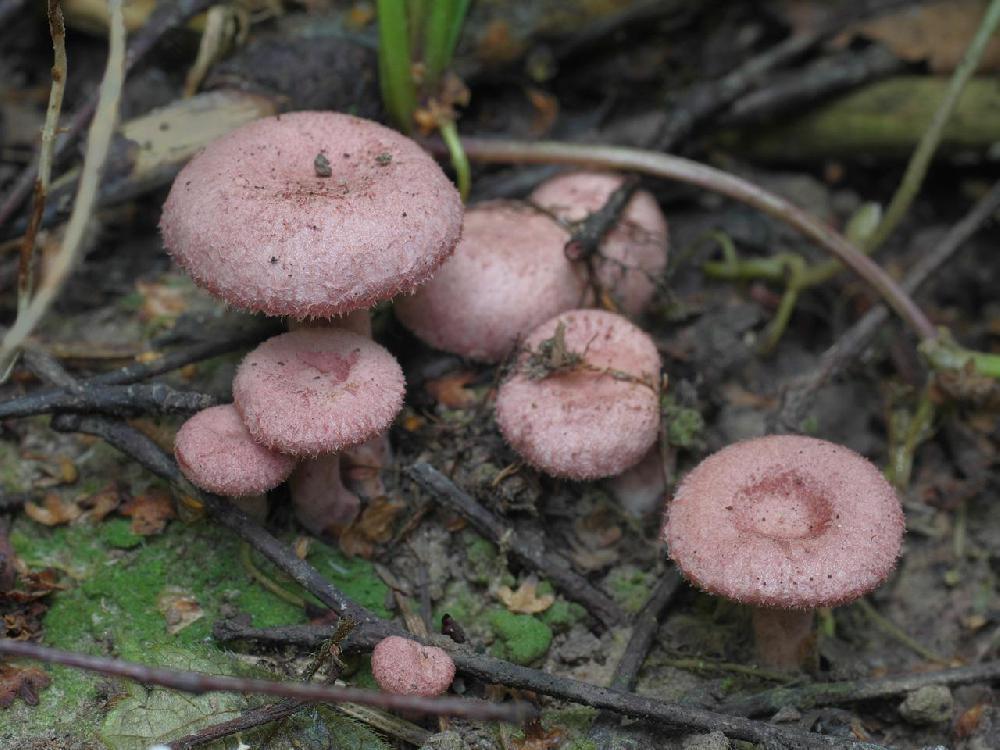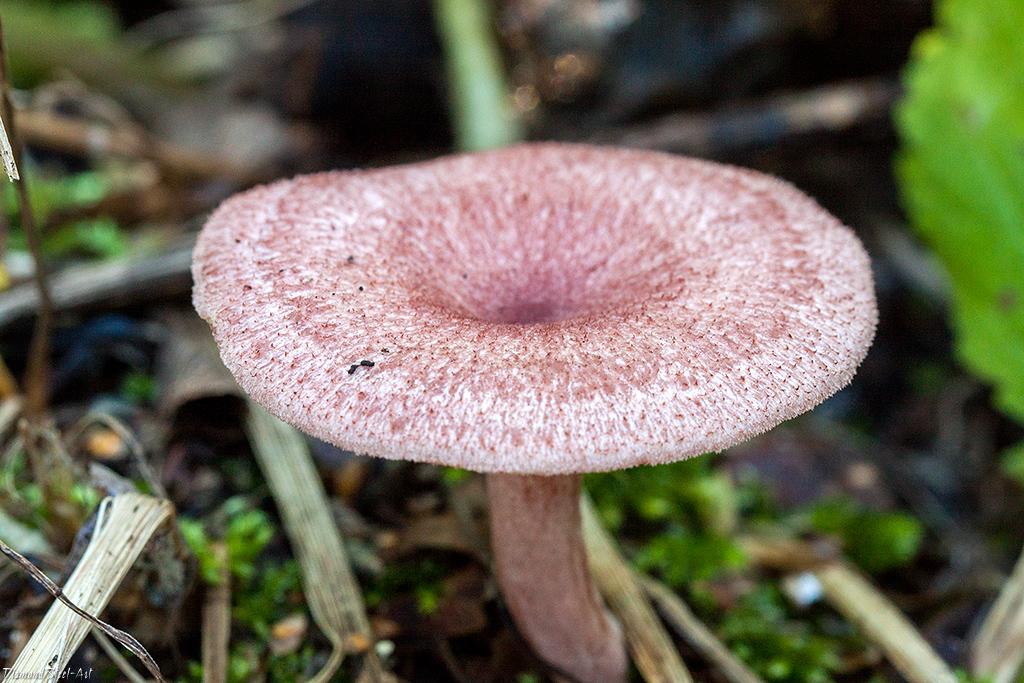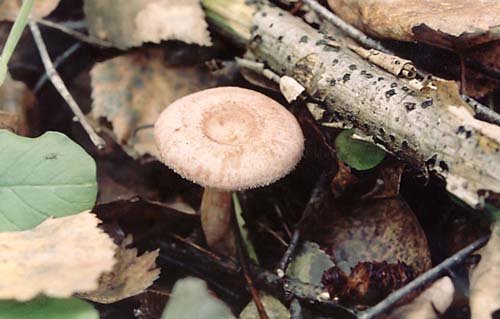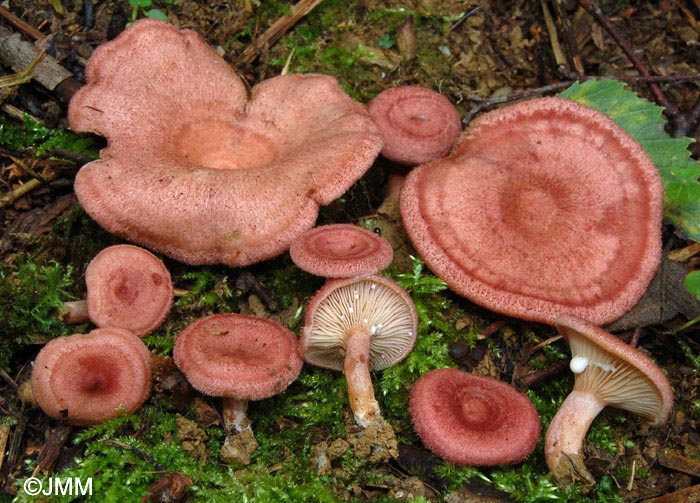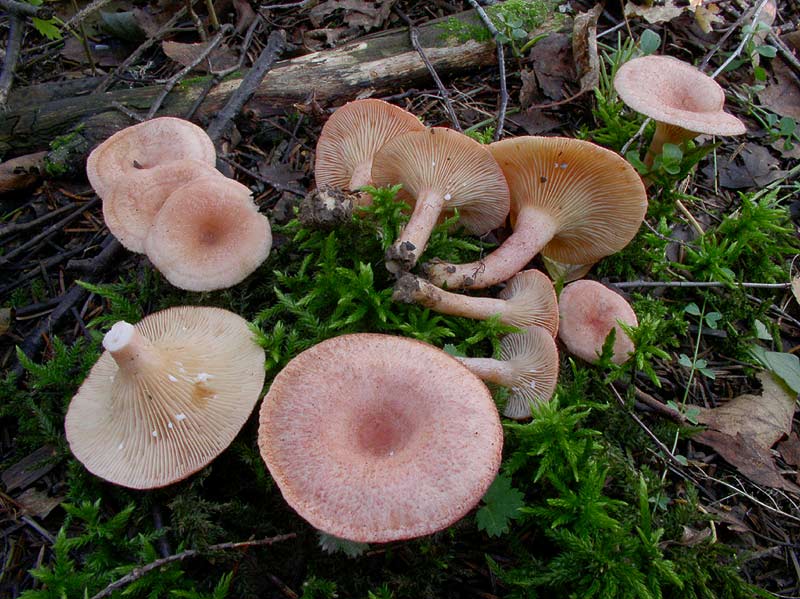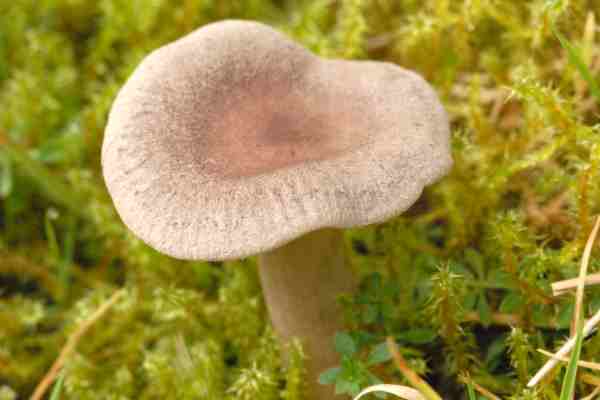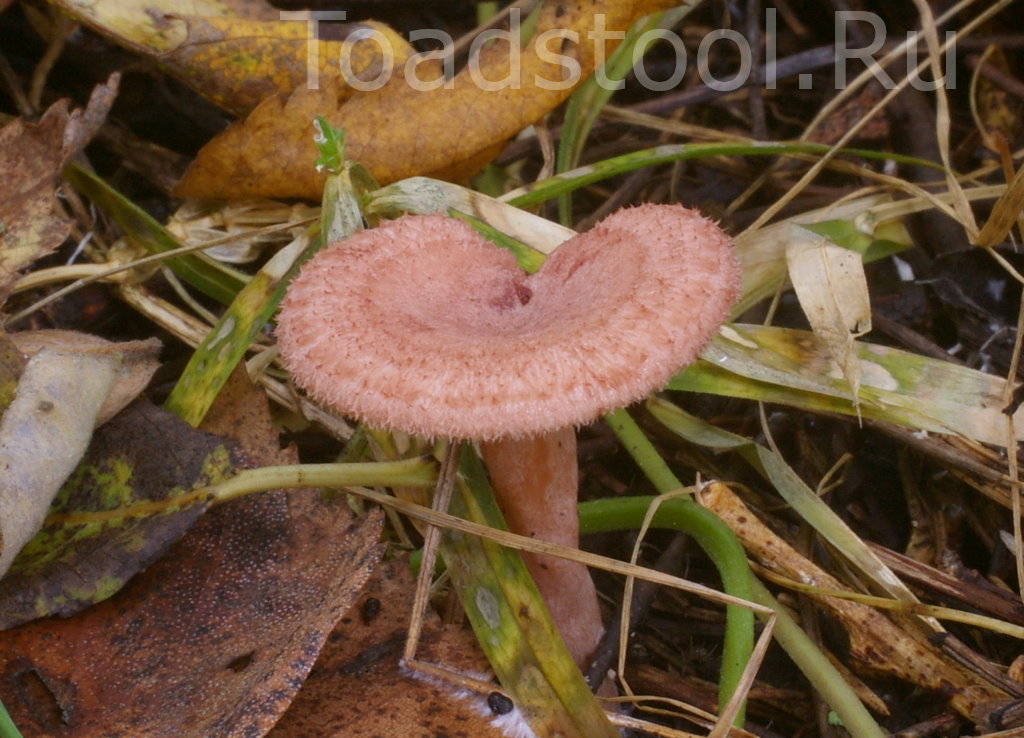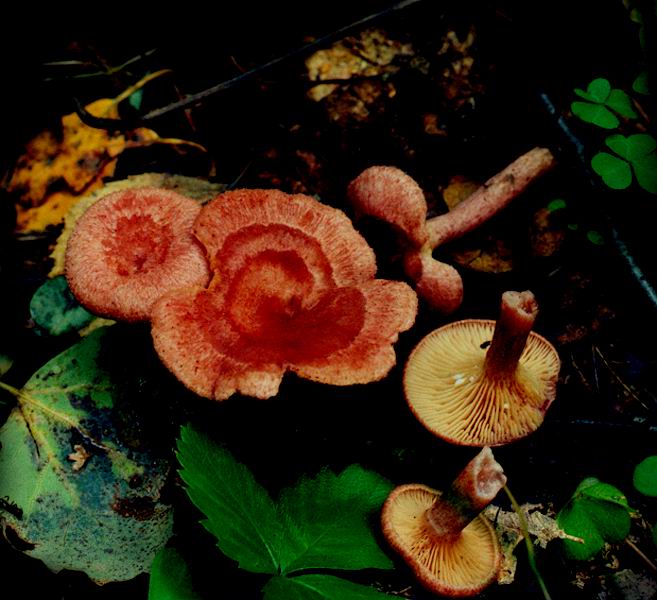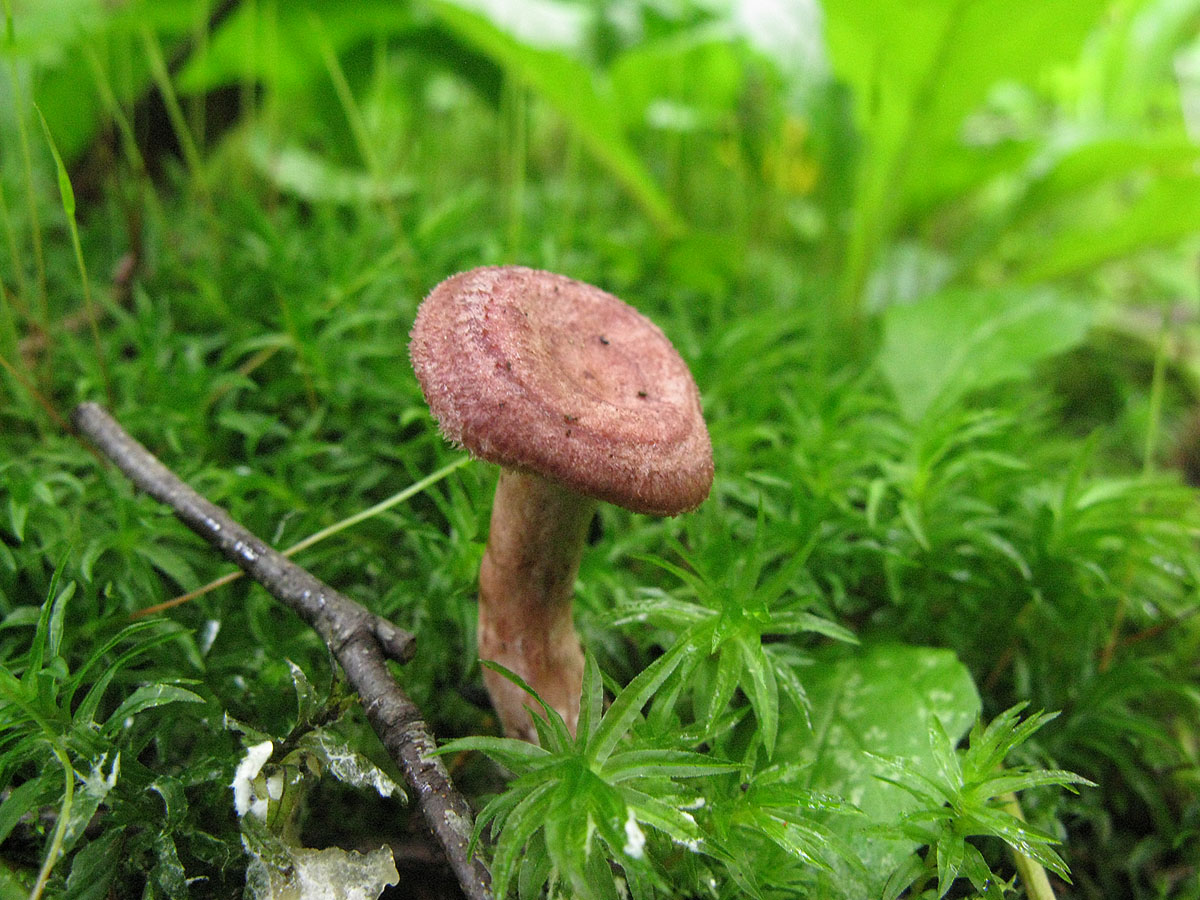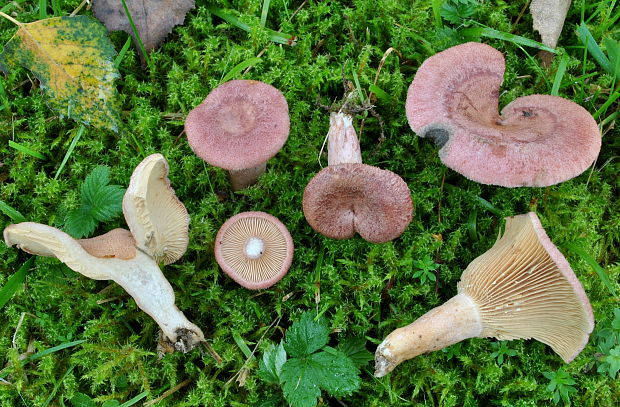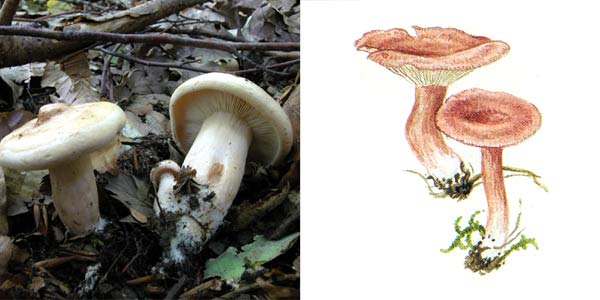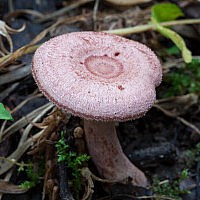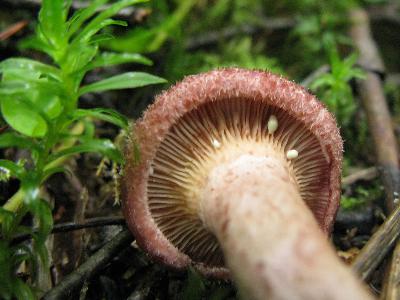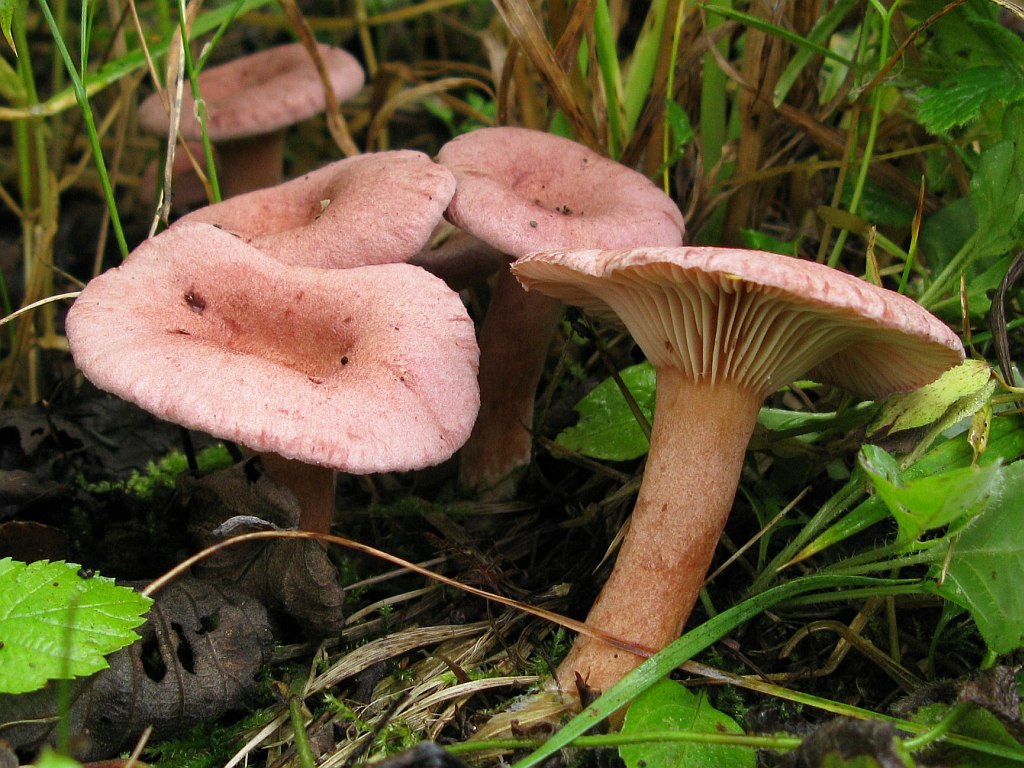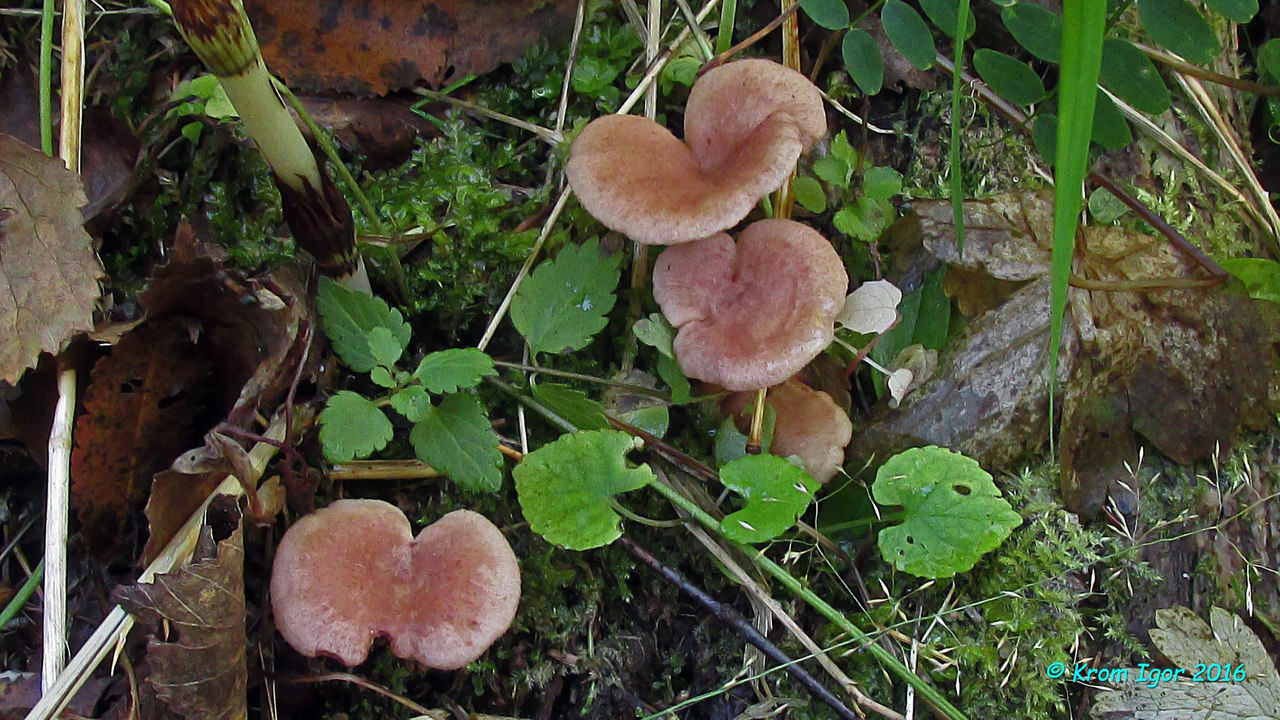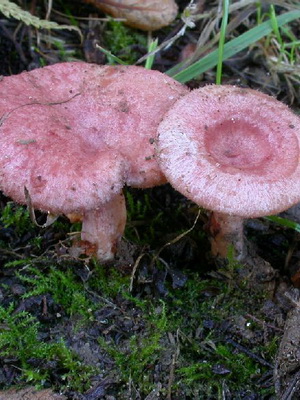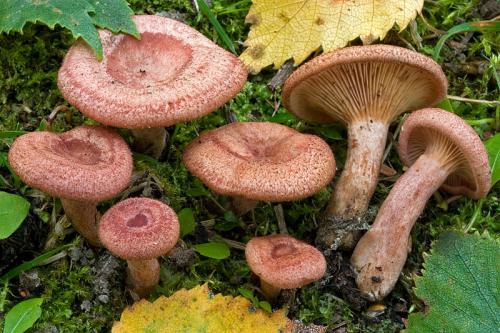Millers are faded and brownish
The faded milky is a conditionally edible lamellar mushroom, in some reference books referred to as a marsh wave or a sluggish milky. Grows in small groups or in numerous colonies from the second half of August to the end of September, invariably giving large yields. Yields usually peak in September. Favorite habitats are areas of mixed or deciduous forests covered with a thick layer of moss, as well as wet areas of soil near swamps.
The cap of the mushroom is convex, with curved edges, but gradually it becomes prostrate-depressed, with a slight bulge in the middle and wavy edges. Its diameter is about 8 cm. The surface of the cap is smooth, damp, after rain it is covered with a thin layer of mucus sticky to the touch. It is painted in a grayish or brownish-lilac color, which in dry and hot summers fade almost to white.
Depending on the habitat, a poorly distinguishable pattern from concentric zones may appear on the surface of the cap in mature mushrooms. The plates are frequent, descending to the pedicle, at first cream, and then yellow. The leg is rounded, sometimes slightly flattened, straight or curved, at the base it can be thinner or thicker, hollow inside, about 8 cm high with a diameter rarely exceeding 0.5 cm.Its surface is smooth, moist, of the same color as hat, only slightly lighter. The pulp is thin, brittle, painted in a grayish color, practically odorless, but with a bitter taste. It produces a pungent milky sap, which, on contact with air, changes its white color to olive gray.
The faded milky belongs to the third category of mushrooms. Perfect for pickling, but requires pretreatment that removes bitterness from the pulp.
The brown miller is an edible lamellar mushroom that grows from mid-July to early October. You need to look for it in dense grass, on soils overgrown with moss, as well as at the foot of birch and oak in deciduous, broad-leaved or mixed forests.
The convex cap of young mushrooms eventually becomes at first prostrate, with a slight bulge in the middle, and then funnel-shaped, with a thin wavy edge. Its diameter in mature mushrooms is about 10 cm. The surface of the cap is smooth, dry, velvety, brown or gray-brown, darker in the center. In dry and hot summers, pale spots may appear on the cap or it will completely fade, becoming dirty yellow. Spore-bearing plates are narrow, adherent, white, which gradually changes to yellow.
The stem is rounded, thicker at the base, hollow inside, about 6 cm high and about 1 cm in diameter. Its surface is smooth, dry, of the same color as the cap. The pulp is soft, firm at first, and then loose, cream-colored, which, on contact with air, acquires a pink tint. It produces a white milky juice, pungent, but not bitter in taste, which quickly turns red in the air.
Brownish milky belongs to the second category of mushrooms, has good taste. It can be eaten without preliminary soaking and boiling. In cooking, it is used to prepare all kinds of dishes and for salting.
Description of the thorny milky
The diameter of the cap of the prickly milkweed is 2-5 centimeters. The shape of the cap in youth is convex with turned edges; with age, it first becomes prostrate, and then funnel-shaped.

Often, the edges are uneven, with a slight pubescence on them. The color of the cap is pink-red, and there is a noticeable zoning. The surface of the cap is slightly fleecy, dry.
The pulp is thin, whitish in color, becomes grayish at the fracture. Milky juice is not pungent, white in color. The plates are of medium size, they grow to the cap, are located quite often, their color is yellowish. Spore powder of pale ocher color.
The height of the pedunculus prickly is 3-5 centimeters, with a width of 0.8 centimeters. The leg is cylindrical, hollow, often curved. The color of the leg is similar to that of the cap.
Distribution of thorny milky
Thorny milles grow in mixed and deciduous forests. They form mycorrhiza with birches. These mushrooms bear fruit in August-September.

Inedibleness of the prickly lactic acid
The spiny miller is considered an inedible mushroom. But some authors consider these mushrooms to be quite suitable for consumption.
Similar species
Thorny millers are similar to pink waves, but this resemblance is only superficial. The spiny milky is distinguished by its fragile flesh, a slight pubescence of the cap and a yellowish color of the plates.
The thorny lactarius differs from the rest of the milkmen in the zoning of the cap color, it has dark red concentric zones that are very clear, even brighter than that of the pink wave.

Thorny Miller (Lactarius spinosulus) - Mushrooms of the Novosibirsk Region

Current title
| Index Fungorum | Lactarius spinosulus Quél. & Le Bret. |
| MycoBank | Lactarius spinosulus Quélet |
Systematic position
Fungi, Basidiomycota, Agaricomycetes, Russulales, Russulaceae, Lactarius
Etymology of the species epithet
Spinōsulus, a, um, mic. spiny, prickly. From spina, ae f 1) bot. Thorn; 2) thorn bush, thorn bush; 3) zool. needle, thorn; 4) toothpick + -ōsulus, a, um gain + diminutiveness.
Synonyms
- Lactifluus spinosulus (Quél. & Le Bret.) Kuntze, Revis. gen. pl. (Leipzig) 2: 857 (1891)
- Lactarius lilacinus var. spinosulus (Quél. & Le Bret.) Bataille, Fl. Monogr. Astérosporales: 37 (1908)
- Lactarius lilacinus subsp. spinosulus (Quél. & Le Bret.) Singer, Annls mycol. 40 (1/2): 125 (1942)
Habit
Fruit body: Cap and stem (agaricoid)
Hat
The cap is 2 - 6 cm in diameter, flat, funnel-shaped, depressed, thin fleshy, pink-red, with darker reddish thorn-like scales, later slightly fading, pink.
The plates are adherent or descending, at first pale ocher, then reddish ocher, yellow with age.
Milky juice is white, at first with a mild taste, then pungent.
Leg
Stem 3 - 5 cm long, 0.2 - 0.8 cm thick, usually irregularly curved, of the same color as the cap or lighter in color.
Pulp
Microscopy
Spores 6 - 8.7 × 5 - 6.6 µm, almost spherical, ornamented. Ornamentation with long scattered ridges, the pattern resembles the color of a zebra. The height of the ridges is 0.8 - 1.3 μm.
Basidia 30 - 50 × 8 - 12 μm, 2-, 3- or 4-spore.
Ecology and distribution
Substrate: Soil, litter
In deciduous and mixed with birch forests, in humid places. It is rare. Forms mycorrhiza with birch.
Fruiting
Aug. Sept .
The divisions correspond to the decades of the month.
Nutritional properties
Inedible
Similar species
Pink bollard (Lactarius torminosus) - is distinguished by its large size, thicker pulp, has a woolly pubescence along the edge of the cap.
Related materials
- Garibova L. V., Sidorova I. I. Mushrooms. Encyclopedia of the Nature of Russia. - M .: "ABF", 1997. - 352 p. - S. 269.
- Heilmann-Clausen J., Verbeken A., Vesterholt J. Fungi of Northern Europe. Vol. 2. The Genus Lactarius. - The Danish Mycological Society, 1998 .-- 287 p. P. 166.
Link to this page for prints
Ageev D.V., Bulonkova T.M.
Share link
How to freeze shredded white cabbage
Autumn is a hot season for hostesses. Harvesting for the winter begins in the form of jam, pickled and pickled vegetables, drying mushrooms and berries. But recently, along with standard types of blanks, freezing has also become popular. Moreover, any berries, fruits and vegetables are frozen.
Cabbage occupies a special place among the preparations. Most often it is salted or fermented. But many hostesses began to freeze her.
White cabbage also belongs to those capricious vegetables that, after defrosting, lose their attractiveness. But you can still freeze it.
Of course, if you want to make a fresh cabbage salad in the middle of winter, you still have to go down to your cellar or go to the market. Since you will not get crispy salad from frozen white cabbage. For the simple reason that white cabbage after defrosting becomes soft, lethargic and completely tasteless if you want to use it raw.
But for cooking borscht, casseroles, cabbage cutlets and even for stuffed cabbage, frozen cabbage is perfect. But first things first.
If the volume of the freezer allows, then the cabbage can be frozen with a whole fork.
This method of freezing cabbage works well for cabbage rolls. After all, it is known that it is problematic to wrap minced meat in fresh leaves - the leaf will surely burst! Therefore, usually the leaves are boiled or at least doused with boiling water so that they become softer and lose fragility.
When frozen, cabbage loses this property and therefore becomes almost ready for stuffing.
When you are going to make cabbage rolls, remove the cabbage from the freezer in advance and leave it in the plus compartment of the refrigerator for several hours. The cabbage will thaw, the leaves will become soft and you can wrap the filling in them without any problems. These stuffed cabbage rolls cook very quickly. Although, it should be noted that their taste is still different from cabbage rolls made from fresh cabbage.
By the way, fresh cabbage is often specially frozen before the forks are disassembled into leaves. By replacing the usual boiling in this way.
If the cabbage is bitter (it also happens), put the chopped cabbage in a colander and immerse it in boiling water for a few seconds. Then leave in a colander to drain or place on a dry cotton towel.
You can also dip the shredded cabbage in boiling water, bring to a boil, then rinse with cold water and dry. The cabbage prepared in this way is packaged in portioned sachets and put into the freezer.
Shredded cabbage can be frozen either individually or in combination with other vegetables - grated carrots or beets.
Before use, shredded cabbage is not thawed, but immediately placed in boiling water, broth or in a preheated pan with oil. Such cabbage is prepared very quickly, as it becomes soft after freezing. Which many do not really like.
Harm and contraindications of milkmen
You must not pick and eat mushrooms that grow near highways, garbage cans and enterprises that pollute nature. The fact is that any mushrooms absorb harmful substances and heavy metals. Accordingly, they can be harmful to health.
Conditionally edible milkmen cannot be eaten without preliminary processing - soaking, boiling
This is done to remove the bitter milky juice, which, if it enters the human digestive system, can cause eating disorders.
All mushrooms should be eaten in small quantities, and for diseases such as pancreatitis, stomach and duodenal ulcers, gastritis, liver failure, cirrhosis of the liver, hepatitis, they should be abandoned altogether.
Lacticians are eaten with caution during pregnancy and lactation. Mushrooms are contraindicated for small children.
Salted mushrooms should not be eaten with hypertension and kidney disease, as this threatens to disrupt the water-salt balance.
The gingerbreads are real.
Cooking Recipes
The common miller belongs to the conditionally edible mushrooms of the second category. When salted, it acquires a pleasant sour taste that distinguishes it from many other mushrooms. After salting, it becomes a bright yellow color.
Primary processing
First, you should clean the fruits of forest debris, inspect for rot and, if found, remove. The miller is not affected by worms, and therefore you should not worry about them.
An important part of pre-cooking the iron is soaking. The procedure lasts a day, and the water changes during this period at least 5 times
After that, the milkmen are ready for further processing.
Pickling
In order to marinate 2 kg of smoothies, you will need:
- water - 1 l;
- salt - 20 g.
For the marinade:
- vinegar - 120 ml;
- salt - 2 tsp;
- sugar - 1 tsp;
- allspice peas - 3 pcs.;
- laurel - 2 leaves;
- cloves - 2 pcs.
After pre-soaking, the mushrooms can be used for pickling. Would need:
- Boil water with 20 g of salt, then add smoothies there and cook for 40 minutes.
- Remove fruits and rinse with cold water.
- Add all the other ingredients to the new water and boil, put the milkers, cook for 15 minutes.
- Then put the mushrooms in prepared jars, pour the marinade to the top and refrigerate on the lower shelf.
For longer storage, sterilization is used.
Hot salting for the winter
To salt 1 kg of smoothies, you will need:
- water - 0.5 l;
- salt - 2 tbsp. l .;
- garlic - 6 cloves;
- bay leaf - 2 pcs.;
- dill - 3 umbrellas;
- currant leaves - 3 pcs.;
- allspice - 5 peas;
- vegetable oil - 6 tbsp. l .;
- salt to taste.
How to salt:
- Add salt to the water, bring to a boil and add mushrooms there.
- After boiling, put laurel leaves and peppercorns, after 50 minutes, drain the marinade into a separate container.
- Put mushrooms in sterilized half-liter jars, add garlic, dill, currant leaves to each.
- Pour a pinch of salt into the drained brine, mix and pour the mushrooms with the composition so that the liquid completely covers them.
- Put another clove of garlic in each jar and add 2 tbsp. l. vegetable oil. Roll up the lids.
Store the workpieces in a cool, dark place.
Cold salting
Millers are soaked, now they can be salted in the easiest way. To do this, for 1 kg of mushrooms you will need:
- salt - 3 tbsp. l .;
- laurel - 3 pcs.;
- horseradish - 3 pcs.;
- garlic - 3 cloves;
- carnation - 3 buds;
- allspice peas - 6 pcs.
How to prepare:
- Put some salt in a prepared saucepan on the bottom with a thin layer.
- This is followed by a row of mushrooms, they fit tightly, with their caps down.
- On top of the milkmen, put 1 piece of laurel, horseradish, cloves, chopped garlic clove, 2 peppercorns.
- Further, salt again. Alternate until the mushrooms run out.
- Sprinkle the smooth surfaces with salt on top, cover with gauze folded in several layers and press down with a load.
- You can try mushrooms after a month.
Milkmen are salted in a cool place, it is necessary to rinse the gauze regularly so that mold does not appear. A few days after salting, the mushrooms should be completely covered with their own juice, otherwise the weight of the load should be increased.
Description
This mushroom is somewhat similar in structure to a bitter, but differs from it in a lighter color.
Hat
Grows to medium size (up to about 15 cm in diameter). In the middle of it, both an impression and a tuberous outgrowth can form. With the growth of the fungus, both signs appear at the same time.
The edges of the cap in young mushrooms are rolled downwards, and open upwards with age. Its color is beige-gray-pink. The surface is not slimy, dry and velvety to the touch.
Pulp
Fleshy, pale and rather fragile. When broken or cut, the pulp smells very strongly of chicory. It tastes bitter. It emits a small amount of milky juice, which resembles water in consistency. The juice does not change color when exposed to air.
Leg
The legs of these milkmen are short and very stocky (approximately 8 * 2). Their color is slightly lighter than the surface of the cap. In young specimens, the legs are full, and in the process of growth they form irregular cavities inside. These milkmen do not have any additional growths on the legs, they are smooth.
Spore-bearing layer
The spore layer is made of plates. Plates of medium thickness and frequency. Almost the same color as the hat, but a little lighter. In very young mushrooms, the plates are almost white, then darken.
Spore powder
The spores of the gray-pink lactarius are almost round, of medium size, with a reticular surface, the bulk of the powder is orange-yellow.
Millers oak and lilac
The oak miller (Lactarius quietus) has a cap 5–8 cm in diameter. The cap is initially flat-convex, later funnel-shaped. The skin is dry, slightly sticky in wet weather, red-brown, reddish-brown with vague concentric zones. The plates are adherent or weakly avoiding, frequent, light brown, brick-reddish with age.The pulp is light brown, brittle, the milky juice is whitish, it does not change color in the air. The taste is mild, bitter at maturity, the smell is slightly unpleasant, buggy.
The leg is 3–6 cm high, 0.5–1.5 cm in diameter, cylindrical, smooth, hollow, of the same color with the cap, rusty-brown at the base.
Spore powder. Yellowish ocher.
Habitat. In deciduous forests, next to oak trees.
Season. July - October.
Similarity. With milkweed (L. volemus), which is distinguished by its abundant white milky juice and herring scent.
Use. Edible, can be salted.
The lilac milky (Lactarius uvidus) has a cap up to 8 cm in diameter. The cap is initially convex, later prostrate and even depressed in the center, mucous in wet weather. Tucked edges, slightly pubescent. The color is light gray, gray-violet, yellowish-violet. The plates are whitish-pink. The pulp and plates turn purple when damaged. At the break, a white milky sap is released, which also changes color to purple. The taste is spicy, the smell is expressionless.
The leg is up to 7 cm high, up to 1 cm in diameter, cylindrical, slightly tapering towards the base, dense, sticky.
Spore powder. White.
Habitat. In deciduous forests, prefers willows and birches.
Season. Summer autumn.
Similarity. It looks like a lilac or canine mushroom (L. repraesentaneus), which grows in coniferous and mixed forests, mainly in the mountains, and has a large size, a yellow cap with a shaggy edge and an almost insipid taste.
Use. It is consumed salted after soaking or boiling.


